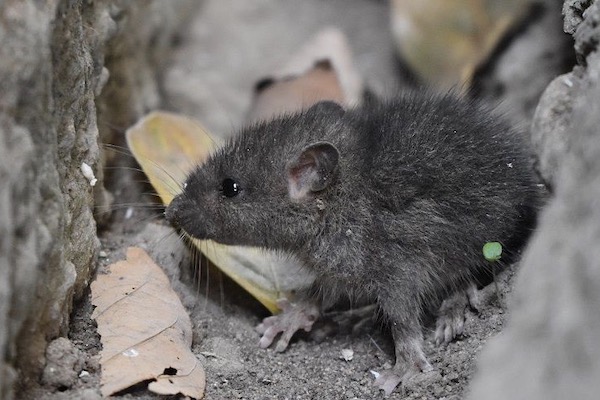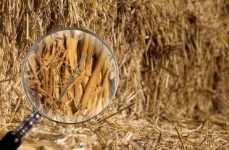Published on the 10/08/2023 | Written by Heather Wright

The future of pest control goes high-tech…
Think pest eradication and you might not think first of technology, but Australian and Kiwi pests are facing a new high-tech threat, with Rentokil tapping IoT and artificial intelligence in its extermination efforts.
The world’s largest pest control group is rolling out connected camera and machine learning and artificial intelligence technology globally to provide what it says is enhanced digital pest surveillance and eradication.
“We see the use of ML and AI and pest recognition as the future of pest control.”
Andrew Taylor, Rentokil Initial lead of internet things vision, says while evolving technology and AI systems have revolutionised most Australian and Kiwi industries, pest services have largely relied on traditional, manual methods, with varied success.
Its PestConnect system is a data-driven solution utilising ‘cutting-edge’ AI technology to predict, monitor and respond to pest activity in real-time, before infestation sets in, Taylor says.
“The more data we have, the less time we need to figure out the issue, and with machine learning enabling us to filter out the ‘white noise’ and remove false positives, we can work more efficiently to control pest activity,” he says.
Recent Australian research by Lonergan and Rentokil Initial showed that 43 percent of business leaders that had a pest infestation had production delays, with 41 percent of businesses even having to close down while undertaking pest control.
Rentokil already has more than 323,000 PestConnect devices, which communicate over Rentokil’s network and feed data to a customer portal along with pest technicians and a command centre, connected globally. It says 25 percent of customers are expected to be connected by 2026.
Now, the company is adding in increasing levels of machine learning and artificial intelligence, developed in conjunction with Google and Vodafone UK.
Matt Jones, Rentokil Initial service innovation and development manager, says the data from the PestConnect units has provided ‘insights like we’ve never seen before’. It’s also proving valuable for customers who need to demonstrate to auditors the efforts they’re taking to manage pest issues.
Taylor draws comparisons with the growing consumer tech market of home security and remote monitoring, where camera doorbells allow us to see who is visiting, motion sensing cameras can keep an eye on properties and audio sensors can listen for sounds like breaking glass.
“Many of these systems also use AI,” he notes.
“We are now in a position to take this technology to our customer sites to help them understand pest activity and to help us respond faster to infestations.”
Connected cameras take photos when triggered by motion and send to the cloud in real time. Rentokil’s computer vision machine learning AI image processing then analyses and identifies any pests before alerting the technicians via their smartphone app.
That analysis is crucial. Taylor notes that with rodents, the cameras are triggered by sensor which detects movement of warm blooded animals, but can also result in false positives from humans moving, HVAC units and lighting, for example.
“We don’t want to overwhelm technicians with hundreds of notifications of nothing of interest, so to remove those images machine learning is used to identify rodents and provide the coordinates in the image with a confidence rating. If nothing is detected or that confidence rating is below the threshold, the images can just be discarded. But if the confidence rating is above the threshold an alert to planners and technicians can be raised,” he says.
“We can improve the efficiency of technicians by using AI to analyse those images and only alerting when needed, so we can lower our environmental impact by reducing the number of visits to site for routine checks, but instead provide 24/7 remote monitoring for peace of mind for the customer,” Taylor says.
AI is also used to address privacy concerns, detecting humans and blurring out those images before they are seen by anyone.
“Using this high-tech targeting – knowing exactly where the rodent is though the computer imagery – means less rat poison is needed because we can focus in the areas where we see that activity, and we can then offer services to our customers to proof and protect those buildings where we identify some weaknesses.”
During its half year results recently, Rentokil shared results of a study into how high-tech pest control using AI helped cut the bill for damage caused by rodents in London, estimated to be almost £7 billion pounds annually.
The technology isn’t just about rats and mice either. Regular scheduled photos of glue boards can be used to identify increasing numbers of flying and crawling insects – right down to identifying the actual bugs.
“What we have learned from innovating and experimenting with camera technology for the last couple of years is that there are a wide range of opportunities on how a camera and AI could help a technician with pest control on customer sites,” Taylor says.
Taylor says data has shown that PestConnect can resolve rodent activity twice as fast as non-PestConnect cases. “We think we can improve that even further with cameras and AI giving us the early heads up.”
Field trials of the technology are being run globally during the second half of 2023 to test and refine the system, which is expected to launch in 2024.
“At Rentokil we see the use of ML and AI and pest recognition as the future of pest control. Our technicians will still play a very important role. Tools like ChatGPT and so on can’t fix pest problems alone, but it about using the insights we gain from using AI to evolve our solutions.”



























